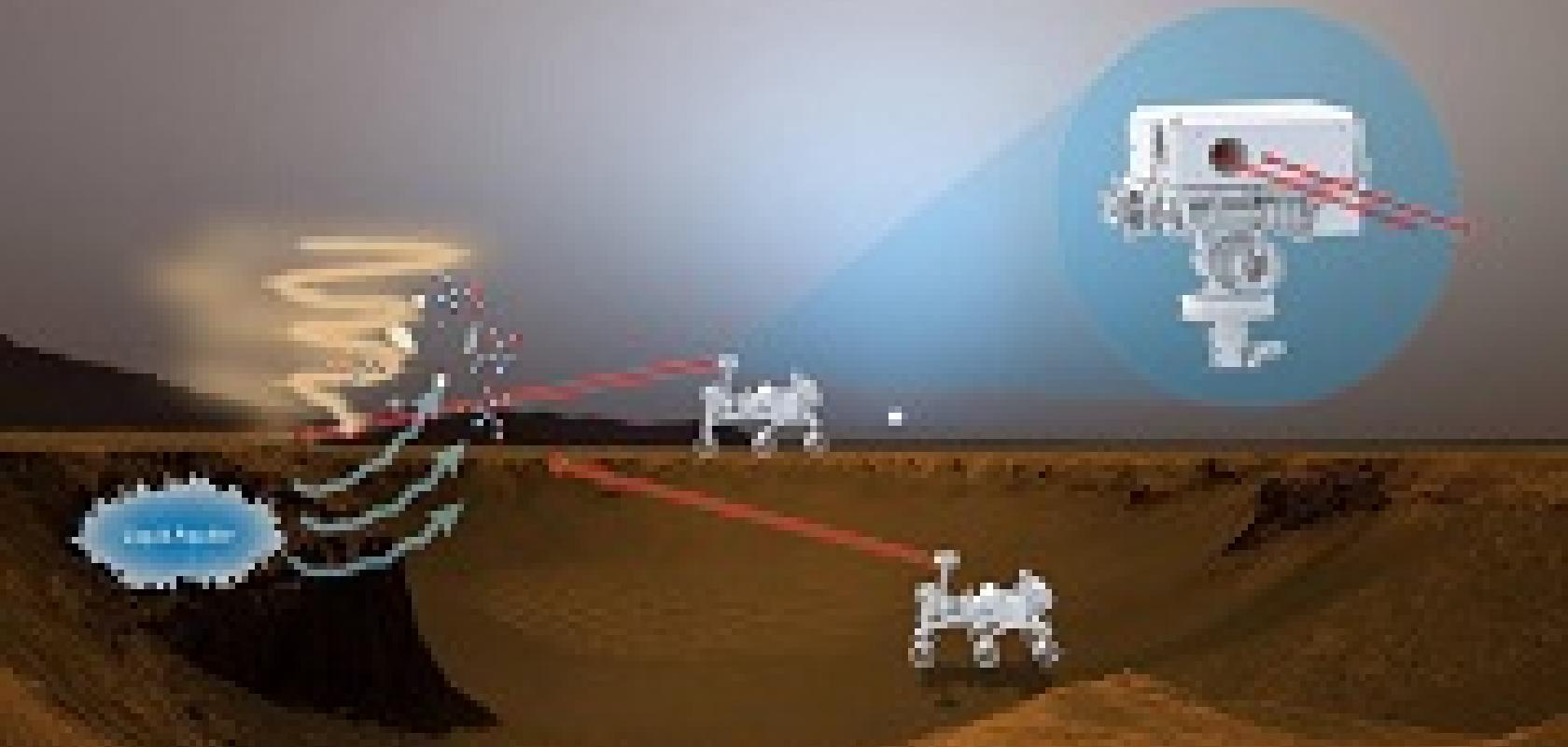Lidar sensing technology that is currently used by the American military to monitor the atmosphere for dangerous chemicals, toxins, and pathogens was recently applied at NASA’s Goddard Space Flight Center to create an instrument that could ‘sniff’ for extra-terrestrial life on Mars.
With such a tool installed on a land-based rover or an orbiting spacecraft, NASA could dramatically increase the probability of finding bio-signatures in the solar system.
The Bio-Indicator Lidar Instrument (BILI) uses UV laser light in fluorescence-based lidar technology to detect atmospheric chemicals. NASA technologist Branimir Blagojevic – who formerly worked for the company that developed the sensor – has applied the technology to create an instrument prototype, proving in testing that the same remote-sensing technology used to identify bio-hazards on earth could also be effective at detecting organic bio-signatures on Mars.
Blagojevic and his team envision BILI operating primarily as ‘a rover’s sense of smell,’ enabling it to ‘sniff’ for atmospheric chemicals that could indicate signs of life in extra-terrestrial environments.
NASA has previously used fluorescence instruments to detect chemicals in Earth’s atmosphere as part of its climate-studies research, although so far the agency hasn’t employed the technique in planetary studies. ‘NASA has never used it before for planetary ground level exploration. If the agency develops it, it will be the first of a kind,’ confirmed Blagojevic.
After scanning the surrounding terrain for dust plumes, BILI – positioned on a land rover’s mast – would use two ultraviolet lasers to pulse light at the dust. The illumination would cause the particles inside these dust clouds to resonate or fluoresce. By analysing the recorded and transmitted fluorescence data, scientists back on earth could determine if the dust contained organic particles created relatively recently or in the past. ‘If the bio-signatures are there, it could be detected in the dust,’ said Blagojevic.
Blagojevic added that BILI is able to detect small levels of complex organic materials in real time from a distance of several hundred metres. Therefore, it could autonomously search for bio-signatures in plumes above recurring slopes — areas not easily traversed by a rover carrying a variety of in-situ instruments for detailed chemical and biological analysis.
‘This makes our instrument an excellent complementary organic-detection instrument, which we could use in tandem with more sensitive, point sensor-type mass spectrometers that can only measure a small amount of material at once,’ said Blagojevic. ‘BILI’s measurements do not require consumables other than electrical power and can be conducted quickly over a broad area. This is a survey instrument, with a nose for certain molecules.’
‘We are ready to integrate and test this novel instrument, which would be capable of detecting a number of organic bio-signatures,’ Blagojevic continued. ‘Our goal is increasing the likelihood of their discovery.’
Blagojevic hopes to further advance BILI by ruggedising the design, reducing its size, and confirming that it can detect tiny concentrations of a broad range of organic molecules, particularly in aerosols that would be found at the ground level on Mars.
Blagojevic and his team used NASA’s Center Innovation Fund, or CIF, to advance the technology. CIF stimulates and encourages creativity and innovation within NASA, targeting less mature, yet promising new technologies.
Further Information:


